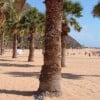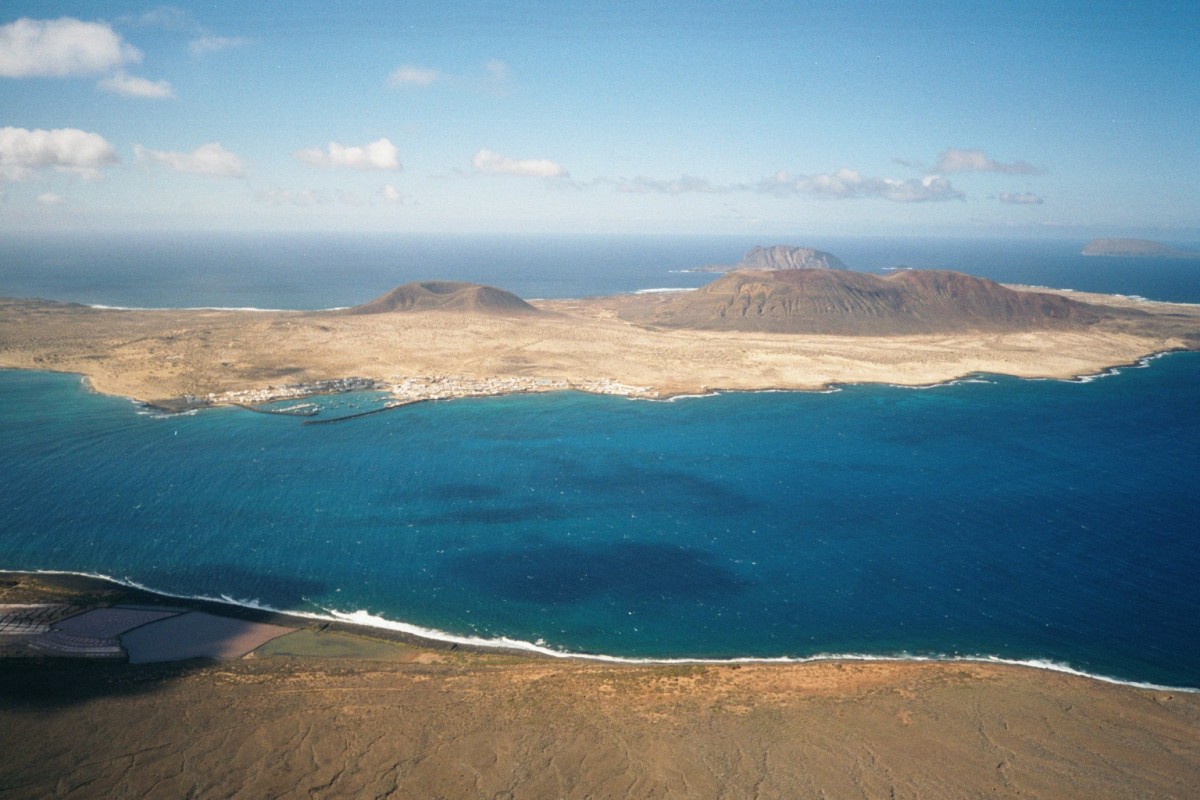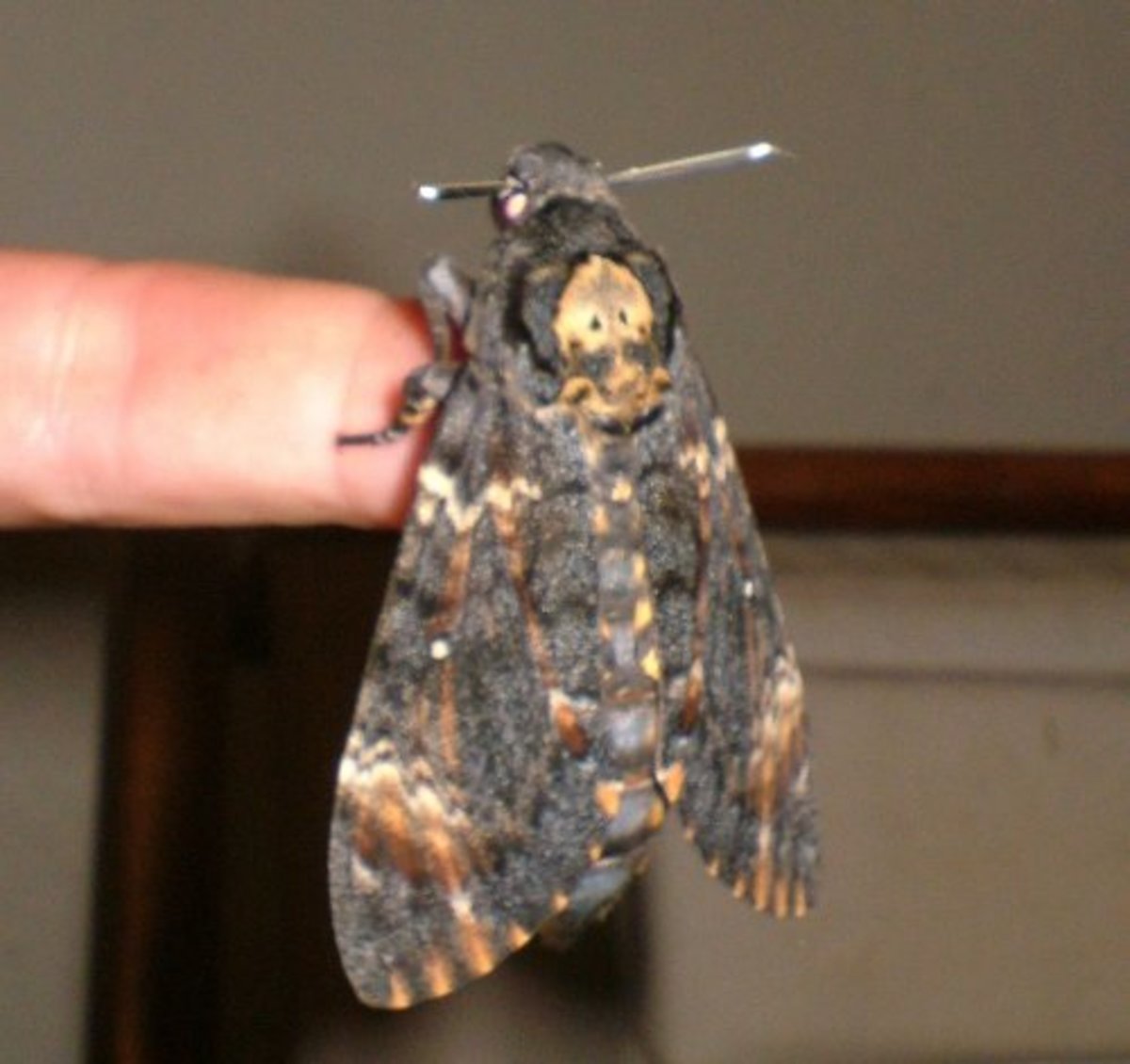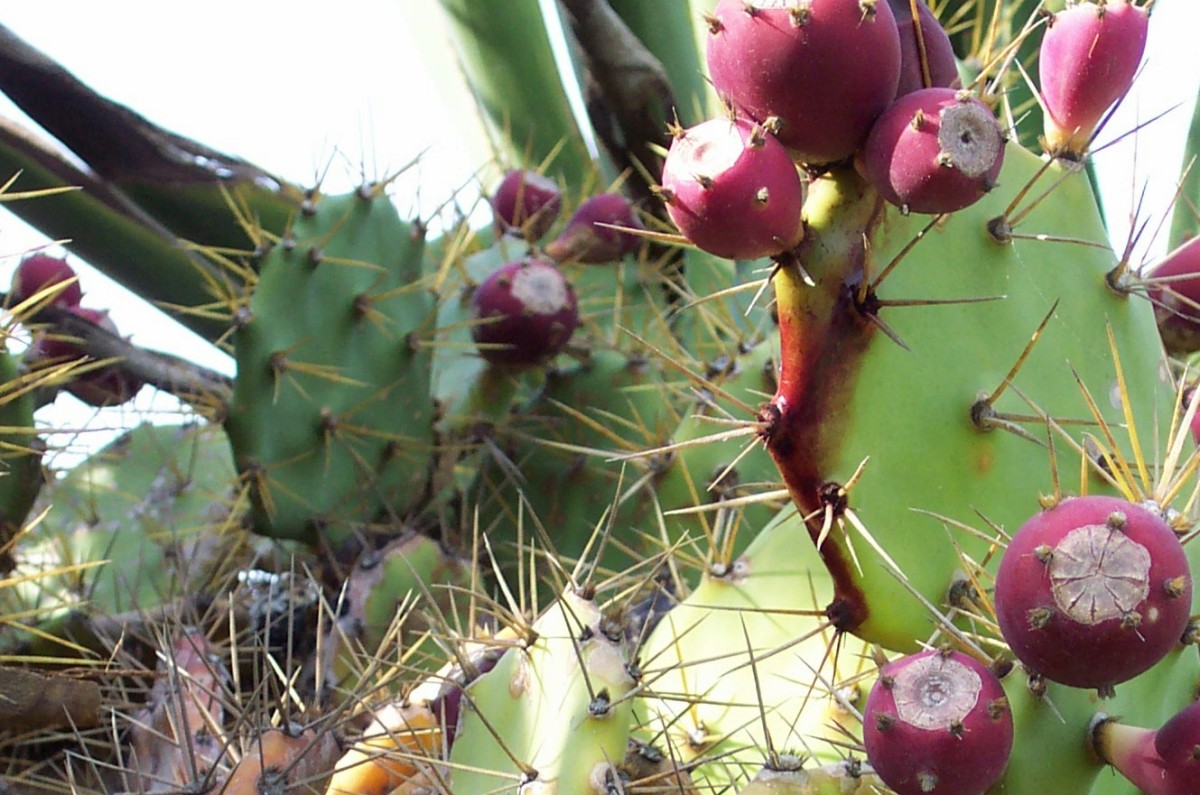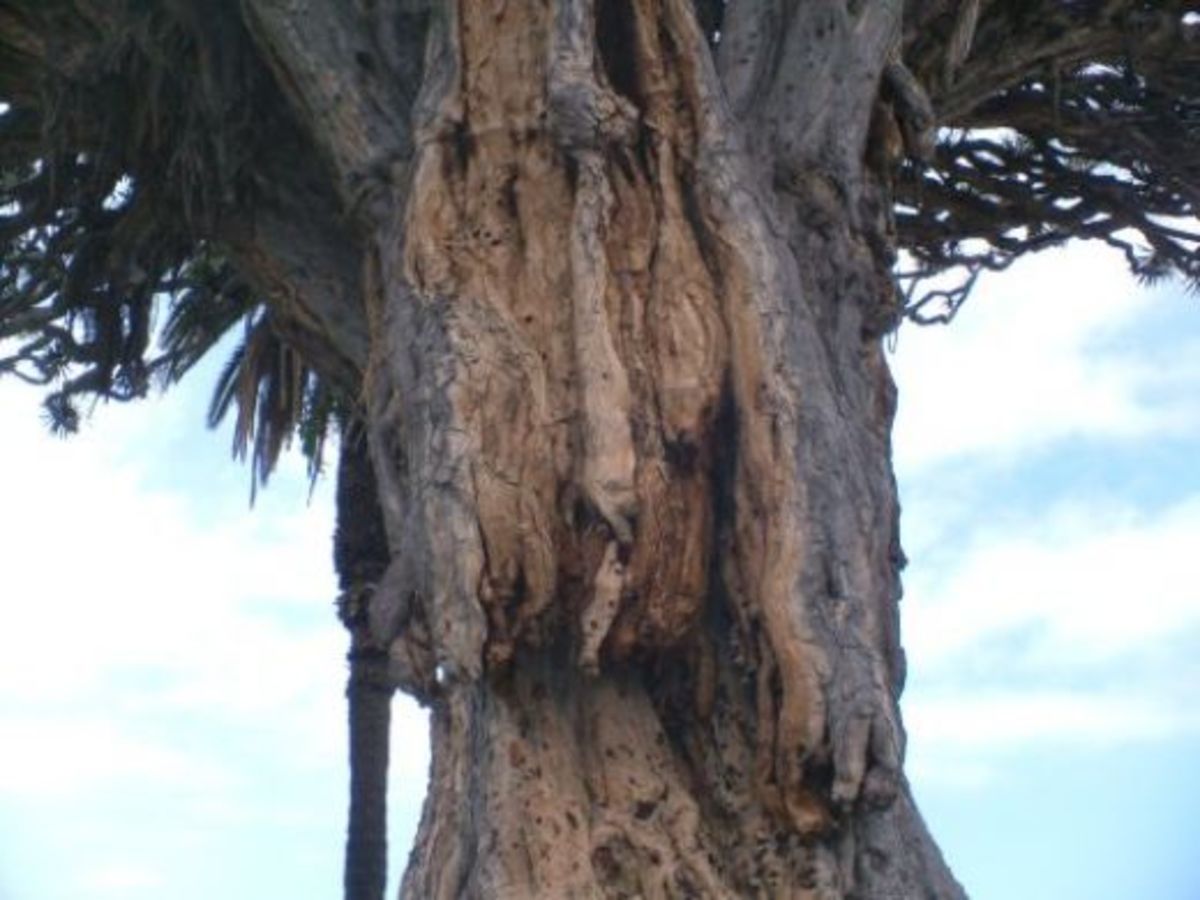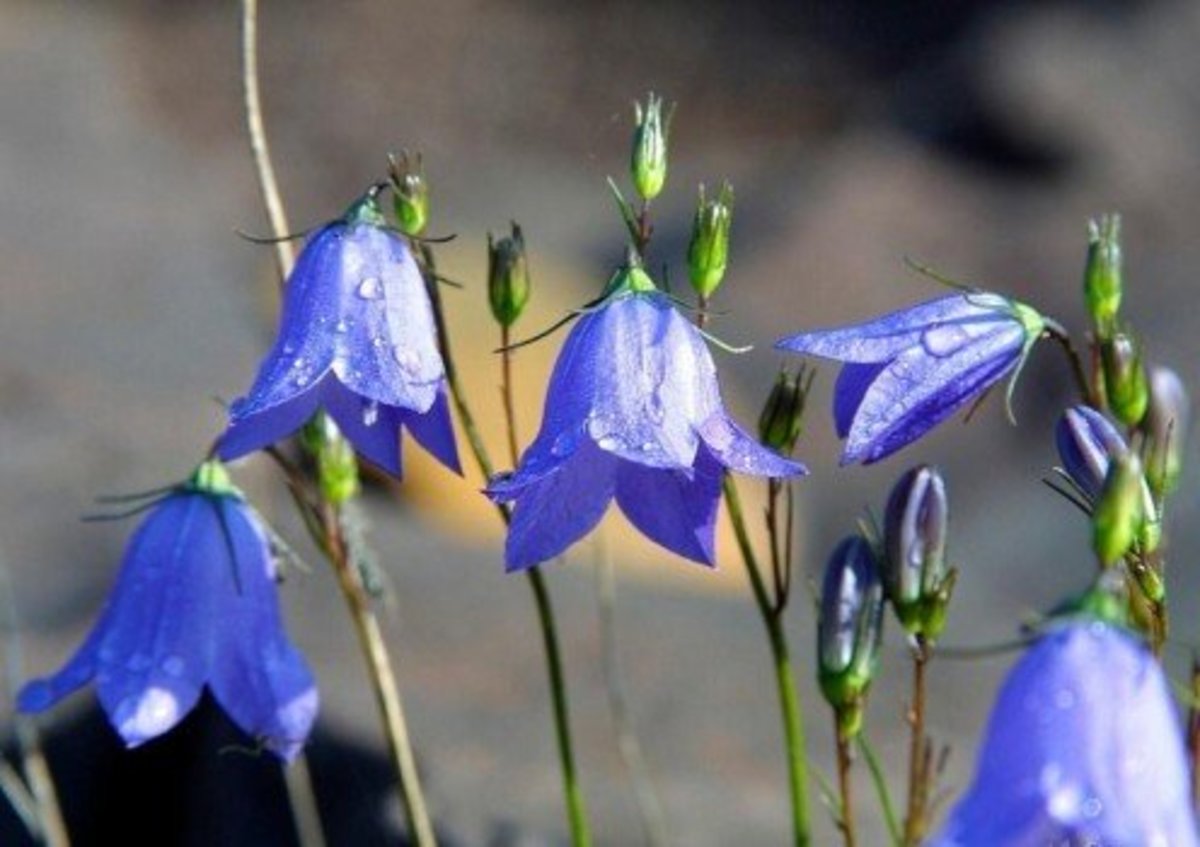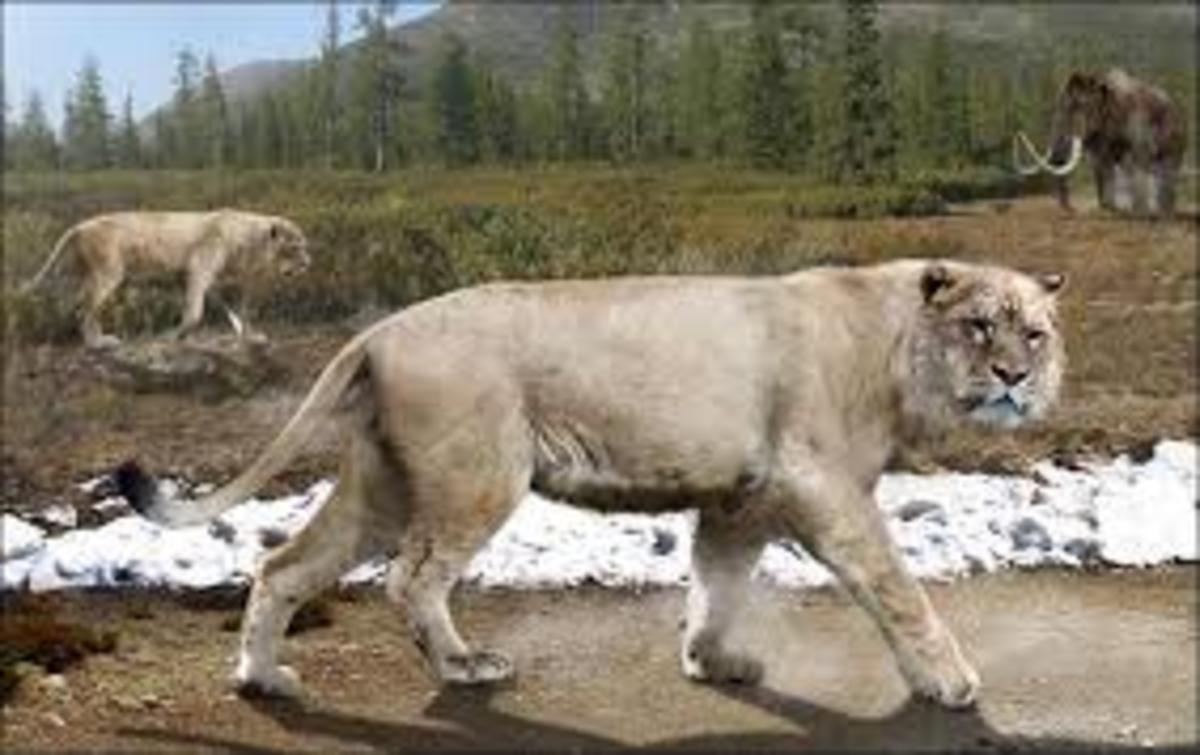A Canary Islands Talk on the Wild Side - Tenerife flora and fauna
An English Library talk about the Tenerife flora and fauna
On the 24 May the English Library in Puerto de la Cruz had a full house for a talk Tenerife Islander gave about the Canary Islands flora and fauna of Tenerife. Ken Fisher, who is the former president of the library, had arranged for me to speak there and I am very glad he did. The event was a complete success for me, both in the number of people who bought tickets and showed up and in the praise that was heaped on me afterwards.
I had a slideshow of photos stored as jpeg files that could be projected on a screen to illustrate what I was talking about too. This, of course, made things easier.
Bard of Ely at the English Library
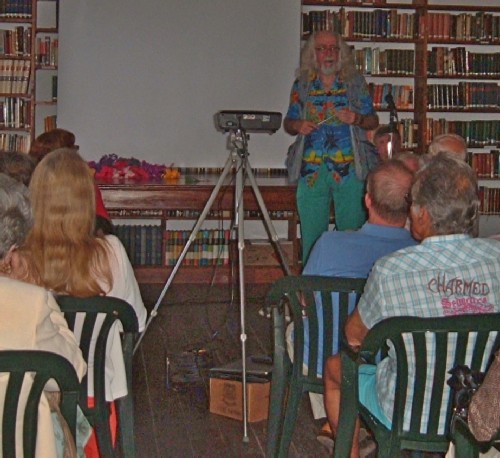
Poster for a talk at the English Library
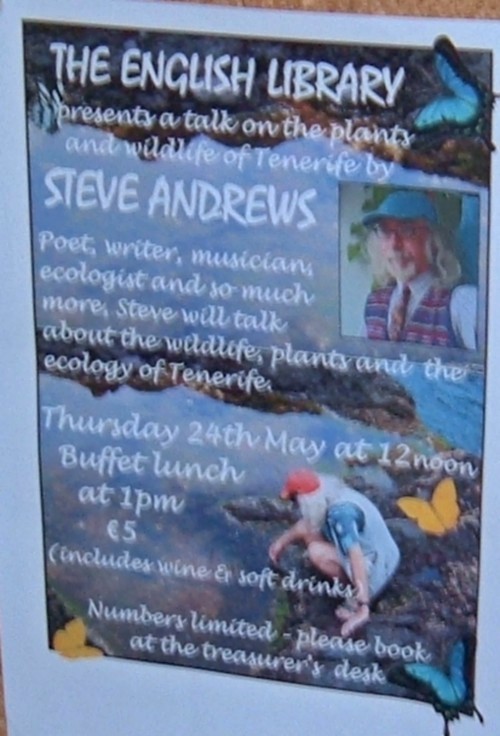
In the beginning
I had so much to fit in I decided that maybe the easiest way would be to take things in chronological order and explain to the audience how I first visited Tenerife in 2002 and fell in love with the island then. I told them how I came over to see my friend the singer-songwriter and fantasy artist Priscilla Hernandez and was with her when I came upon my first Dragon Tree.
Milk Thistle
I had been fascinated too by the great numbers of lizards, honeybees, and all sorts of wild flowers and herbs that I saw growing. The Milk Thistle (Silybum marianum) was one of these. I had seen it growing as a weed in the streets of La Laguna where I was staying at the time.
Tenerife News
I explained that there area normal purple-flowered variety and a white-flowered one and showed photos to prove this. I told the crowd how the Milk Thistle is sacred to the Virgin Mary who is also the patron saint of the Canary Islands, so it is very appropriate to see the plant thriving on Tenerife. It became the first plant I wrote about in Tenerife News newspaper.
I also told them all how the bees and lizards reminded me of my childhood when my grandfather was a bee-keeper with an allotment on which he had his hives and that there were plenty of Common Lizards (Lacerta vivipara) on the railway bank alongside his land.
I went on to explain how I had found Skinks (Chalcides viridanus), and how we had visited La Orotava where I spotted a Gecko (Tarentola delalandii). I love reptiles so finding these had given me even more reasons why I liked Tenerife so much.
Portuguese man-of-war
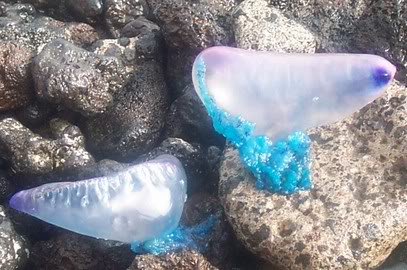
Cardoncillo
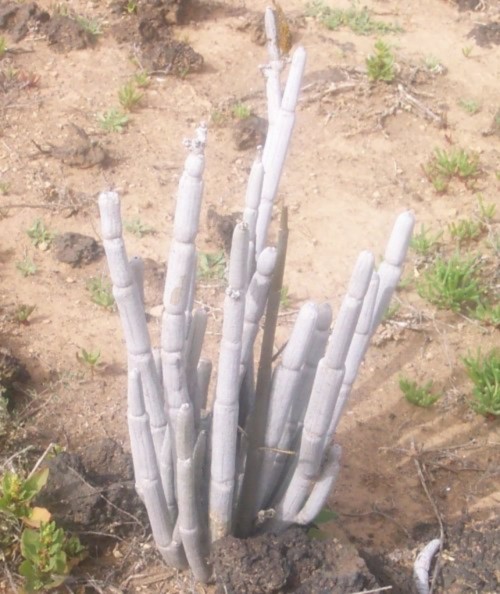
Tenerife South
I continued my talk by telling about how in 2004 I eventually moved to Tenerife and lived in Costa del Silencio. I used to often go exploring the local area including Yellow Mountain in Amarilla Bay and the beaches and coast around Las Galletas.
I had found Portuguese Man-of-Wars (Physalia physalis) on one trip to a local beach and had tried rescuing them from being stranded on the sand. Although they are dangerous because they can give a very painful sting, I was picking them up by their floats and throwing them out into the water.
In the Las Galletas area in some pools on the waste-ground by the beach I had discovered large numbers of Mosquito Fish (Gambusia affinis) and had seen the Ringed Plover (Charadrius dubius) there too. I had taken my friend the author C.J. Stone there to show him what I thought would make a great nature reserve. He had written and published a story about this.
I also told the story of when I had gone out walking on the rocks at the base of Yellow Mountain with my friend Keith and his dog Scampy Dog, and how they had both slipped and got their feet wet in a rock pool. I had found this amusing, though I hadn't said anything, and had prided myself on being so sure-footed.
A few days later I was on another beach and spotted some Blennies (Blennius trigloides) in a pool there. Wanting to get a photo I went closer but then I slipped on the wet and slimy rocks and took a tumble right into the water. I was soaked and grazed my knees on the rocks. My camera was ruined too.
A day or so later I saw my friend Keith and told him about this. He said: "I bet you thought it was funny the other day, when Scamp and I got wet in the pool?" I had to admit I had done.
"Look at this," he had exclaimed pointing to a tattoo on his arm that read "Instant Karma!"
The audience all enjoyed hearing my stories and laughed.
I went on to tell of other animals and creatures I had found in the south of Tenerife, including the White-toothed Pygmy Shrew (Suncus etruscus), the Praying Mantis (Blepharopsis mendica) and the Death Head's Hawk Moth (Acherontia atropos).
I also talked about the many fascinating plants I had discovered, such as the Cardoncillo (Ceropegia fusca), which is an unusual succulent that grows in some of the semi-desert areas of the south of the island.
Antlion
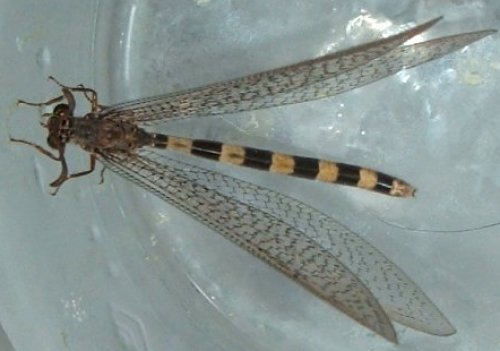
Erjos ponds
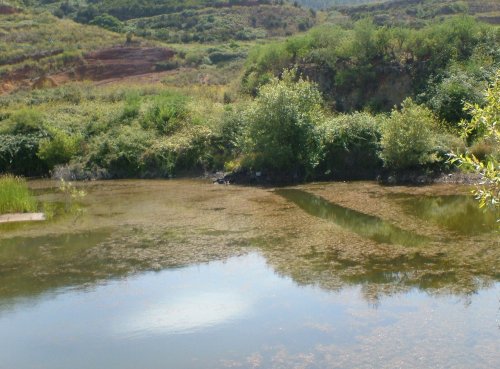
Tenerife North
Next I described how I had moved to the north of Tenerife and talked about the ponds of Erjos and the frogs, dragonflies and water birds that can be seen there. Herons (Ardea cinerea), Moorhen (Gallinula chloropus ) and Coots (Fulica atra) can all be seen at Erjos.
I explained that there are two types of frog on the island, the Stripeless Treefrog (Hyla meriodonalis) and the Iberian Water Frog (Rana perezii), and that they both breed in the ponds of Erjos. I told the audience about the time I was the guide for a party of school children from British School Tenerife for a nature walk around the pools.
I talked about how I moved into an apartment in San Marcos and some of the fascinating insects I had seen there, insects that had flown in from my balcony, insects such as the Ant Lion (Myrmeleon alternans).
I also mentioned how I had discovered a pyramid in the Camino de la Suerte, whilst investigating the area I had moved into, and how this and the other pyramids of the island are the subject of an investigation myself and my friend Ken Fisher are conducting. Although the lecture was about the flora and fauna of Tenerife, I pointed out that the pyramid I showed was covered in the green fern Davallia canariensis .
I explained about how I had been helping the Monarch Butterfly (Danaus plexippus) by rearing the caterpillars on Milkweed (Asclepias curassavica) I had grown. I showed a scan of a newspaper feature I had been commissioned to write about this amazing insect.
As a result of me talking about Monarch Butterflies before to Ken and other members of the library, there are now plants of Milkweed being cultivated in the gardens there, and the first caterpillars are soon to complete their metamorphosis.
Canary Blue butterflies
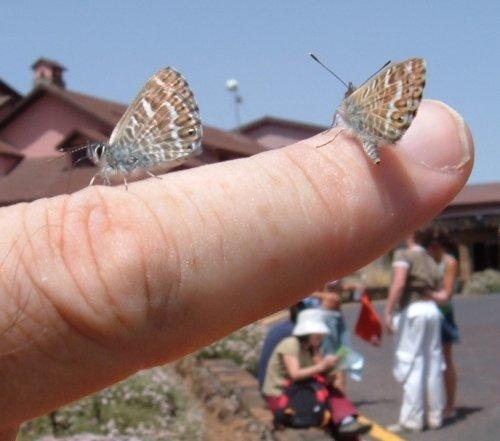
High on Tenerife's Mt Teide
For the third and final section of my talk I went high up on Mt Teide where I explained that the very rare Red Viper's Bugloss (Echium wildpretii), or Tajinaste Rojo, as it is called in Spanish, can be seen growing. It is the only place on the planet where this unusual flower grows wild. I also mentioned the White Viper's Bugloss (E: simplex), which like its cousin, is an exceedingly rare plant in the wild.
I told a story about when I was once up there trying to get some photos of the Canary Blue Butterfly (Cyclyrius webbianus). They were flying about rapidly and never stopped so I could get close. The pretty little insects eventually landed on my hand attracted by the sweat. This was how I got a picture.
I went on to talk a bout a bird you can sometimes see up on Mt Teide, which is the Great Grey Shrike (Lanius excubitor). This strange bird has the unusual habit of impaling its prey on thorns and is also known as the "Butcher bird."
I finally ended my talk by mentioning the Teide Violet (Viola cheiranthifolia), beautiful little plant that is so rare it is only found high on the peak of Mt Teide.
We then had 10 minutes of an interesting question and answer time. I had overrun my 45 minutes by five and Ken had to give me a nudge to call a close to the proceedings. The applause at the end was loud and I felt proud of having entertained them all so well.
I then went to enjoy the wonderful buffet, washed down with some most excellent red wine as members of the audience chatted to me. One elderly man told me it was one of the best events he had ever attended there. He said he has vision problems so looking at the slide show is of little use to him, but my descriptions had brought my talk to life for him. Compliments like this have inspired me to want to give more talks at the English Library in future.
© 2012 Steve Andrews
